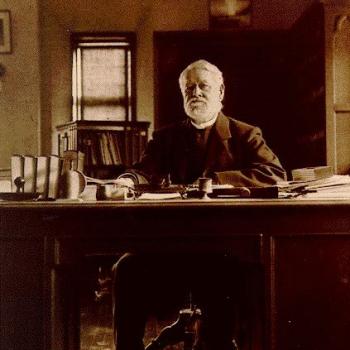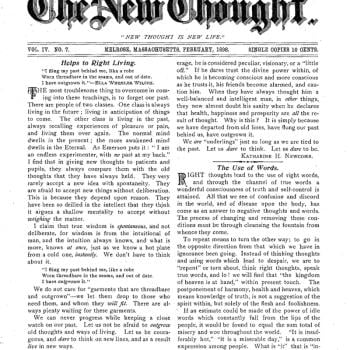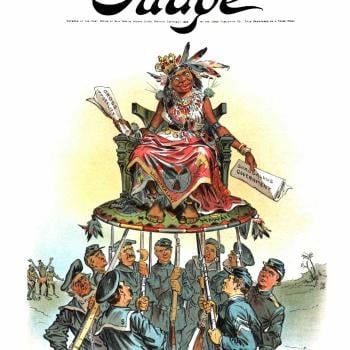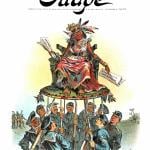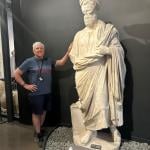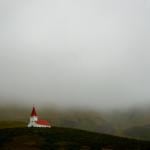Theosophy is (a) a fringe esoteric/religious movement founded in the 1870s, one of many such marginal sects; or (b) the indispensable key to understanding Western culture in the early twentieth century. I can make a case for either of these extreme statements, but the arguments for (b) are much stronger than you might think.
I have argued for Theosophy’s role in raising awareness of the significance of alternative Jewish and Christian scriptures. But if you are interested in the years between roughly the 1890s and the 1930s and you are investigating Western literature, visual art, music, film, design, architecture, educational theory, psychology, or generally “culture,” you will come across references to Theosophical interests far more frequently and systematically than you might expect. That statement applies across Continental Europe, as well as the Anglo-American world. When I was writing my book on the First World War era, The Great and Holy War (2014), it was wearying to find so very many references to Theosophical concerns – among American and British novelists, French and German artists, Russian generals and German politicians, and so many others, Modernists of all kinds and shades.
The number of key cultural and intellectual figures who had some interest in Theosophy – ranging from mild dabbling to consuming obsession – was overwhelming. The same holds true for political leaders. I was recently reading about the feminist movement c.1900, and the rise of the New Woman. That meant radical authors like Mona Caird, who – no surprise – joined the Theosophical Society in 1904. And so did so many other feminist intellectuals around that time, especially those interested in emerging theories of women’s spirituality. In diffused form, Theosophical ideas and themes achieved a real mass appeal, partly through popular culture. Some even argue that The Wizard of Oz is a Theosophical parable.
In near-despair, I almost felt like compiling a (brief) list of those figures who remained untouched by Theosophy.
If you do not recognize and acknowledge those interests, you are missing a core element of the story, and of the era. Fortunately, as I will show, we now have access to a large body of published writing and research on these topics. My aim here is to show the absolute need to incorporate that background into the story of that era.
Because that literature is now so vast, I will only offer the briefest and most grossly simplified sketch of the movement here. I will then concentrate on identifying the key themes of its appeal, and its influence. Bear with me if I often use the past tense for Theosophical ideas. I acknowledge that the movement survives today, although in nothing like its past glories.
The key founder was Helena Petrovna Blavatsky, a Russian occultist who claimed to have traveled widely around the world in the 1840s and 1850s. In 1875, she co-founded the Theosophical Society, and published such influential writings as Isis Unveiled (1877) and The Secret Doctrine (1888). You can find a huge range of Theosophical writings online at theosophy.org.
Theosophy was a synthesis of the esoteric and occult ideas of the previous two centuries, including claims to supernatural powers. Also influential was Spiritualism, and its ideas of mediumship. So was New Thought. These ideas were now merged with core themes of Hinduism and Buddhism, including the multiplicity of worlds and the very ancient (multi-billion year) history of consciousness. Reincarnation was a fundamental principle.
In terms of claiming to synthesize the world’s religions, Theosophy was very much in tune with the currents of the age, as recently described at this blog by Tal Howard’s post on the 1893 World’s Parliament of Religions.
While Theosophy grew from older esoteric roots, much of its appeal derived from its seeming congruence with the science of the day, particularly notions of evolution. As I remarked last time, Theosophists told of the rise and fall of successive races, and also depicted the progress of the human soul through successive lives. At the summit of spiritual evolution were divine redeemers, avatars, or Christs. Following Buddhist notions of the bodhisattva, Theosophy taught the existence of great spiritual teachers who had achieved godlike status, and these Ascended Masters transmitted their wisdom to initiates in each age. Blavatsky herself claimed to transmit the wisdom of such Masters.
Or to quote from my Great and Holy War, “Rooted in Hindu and Buddhist ideas, Theosophy claimed to transmit the ancient teachings of various lost civilizations and races, most not known or recognized by mainstream historians but passed on through visions and trances. Theosophy and its offshoots told the story of a planet vastly older than orthodox historians would ever accept, a world in which successive races had risen and fallen, usually through the purest Darwinian means of conflict and combat, cycles of racial vigor and degeneracy. For true believers, the idea that civilizations collapsed in bloody cataclysm was something like a law of history. Theosophy was messianic, drawing on the Buddhist view of successive bodhisattvas as godlike charismatic leaders who guided the world’s spiritual development. Buddha and Jesus were spiritual masters of earlier eras, and early-twentieth-century Theosophists dreamed that another such world teacher would appear imminently, to lead the world into a utopian Aquarian Age.”
One special feature was Blavatsky’s claims to have discovered secret Asian scriptures revealing ancient truths. She taught the existence of the Akashic records, a compilation of all events and realities that had ever occurred, that were preserved in an etheric plane, and which could be accessed by mystical intuition, and presented as revered scriptures. The Secret Doctrine purported to reveal and expound one such ancient text, the Book of Dzyan. Few modern scholars accept the authenticity of such works, which Blavatsky compiled from existing writings about South Asian religion and lost continents.
Theosophy taught that ancient civilizations had gained vast knowledge and wisdom, which had been ruined and dispersed in successive catastrophes. However, modern inquirers could reconstruct this knowledge by diligent study of ancient texts, primitive mythologies, and archaeological research. Historical religions, including Christianity, contained the misunderstood fossils of these glorious ancient truths.
To summarize, the Theosophical Society declared its goals thus:
- To form a nucleus of the Universal Brotherhood of Humanity, without distinction of race, creed, sex, caste, or color.
- To encourage the study of Comparative Religion, Philosophy, and Science.
- To investigate the unexplained laws of Nature and the powers latent in man.
The group’s motto was: There is No Religion Higher Than Truth.
Although its ideas were very influential, the Theosophical movement itself tended to splinter and fragment, and there were many offshoots and imitators. One of the most powerful was Rudolf Steiner’s Anthroposophy, which attained amazing influence in Continental Europe in the 1910s and 1920s. Theosophy was a prime source for later US movements like Mighty I AM, and the Church Universal and Triumphant. Theosophical ideas and sources also influenced African-American religion, through the Moorish Science Temple, and (indirectly) the Nation of Islam.
If the package of ideas I describe here sounds familiar, it is because virtually every part of it was eventually adopted by the New Age movement.
Next time, I’ll suggest just why Theosophical ideas held the power they did a century ago.
As I say, recent literature on Theosophy is extensive, but some great places to start include:
Joy Dixon, Divine Feminine: Theosophy and Feminism in England (Johns Hopkins, 2003)
Joscelyn Godwin, The Theosophical Enlightenment (State University of New York Press, 1994).
K. Paul Johnson, The Masters Revealed: Madam Blavatsky And The Myth Of The Great White Lodge (State University of New York Press, 1994).
June O. Leavitt, The Mystical Life of Franz Kafka (Oxford University Press, 2012).
Glenn Alexander Magee, ed., The Cambridge Handbook of Western Mysticism and Esotericism (Cambridge University Press, 2016).
Ken Monteith, Yeats and Theosophy (Routledge 2008).
Maurice Tuchman, ed., The Spiritual in Art: Abstract Painting 1890–1985 (Abbeville Press, 1986)
Peter Washington, Madame Blavatsky’s Baboon: A History Of The Mystics, Mediums, And Misfits Who Brought Spiritualism To America (Schocken Books, 1995).
Leigh Wilson, Modernism and Magic: Experiments with Spiritualism, Theosophy and the Occult (Edinburgh University Press, 2012).
One author in particular stands out, namely Nicholas Goodricke-Clarke, who died at a tragically early age in 2012. See especially Nicholas Goodrick-Clarke and Clare Goodrick-Clarke, G. R. S. Mead and the Gnostic Quest (Berkeley: North Atlantic Books, 2005). He was also general editor of an important series on Western Esoteric Masters. This included Richard Seddon’s Rudolf Steiner (North Atlantic Books, 2004). Goodricke-Clarke himself edited the volume in that series on Helena Blavatsky (North Atlantic Books, 2004).
Although this is not strictly relevant to my discussion here, Goodricke-Clarke also published some really excellent work on the long-vexed question of the relationship between Nazism and the occult, and in the process dispelled a great many silly myths, falsehoods, and conspiracy theories. See his The Occult Roots of Nazism (Aquarian Press, 1985); and also his Black Sun: Aryan Cults, Esoteric Nazism And The Politics Of Identity (New York University Press, 2002). Goodricke-Clarke drew attention to the key influence of the movement of Ariosophy (“Aryan Knowledge”), a deviant offshoot of the Theosophy/Anthroposophy tradition.
Over the past decade, conferences and seminars have proliferated on Theosophy, the arts, literature and Modernism, and many have produced proceedings or published papers online. This is a lively and flourishing area of scholarship.




